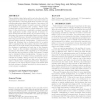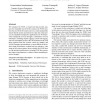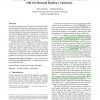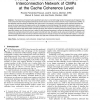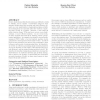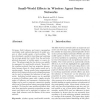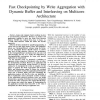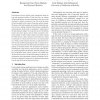ICS
2011
Tsinghua U.
13 years 2 months ago
2011
Tsinghua U.
The probability that a failure will occur before the end of the computation increases as the number of processors used in a high performance computing application increases. For l...
EUROSYS
2011
ACM
13 years 2 months ago
2011
ACM
We introduce Re-FUSE, a framework that provides support for restartable user-level file systems. Re-FUSE monitors the user-level file-system and on a crash transparently restart...
EUROSYS
2011
ACM
13 years 2 months ago
2011
ACM
Traditional agreement-based Byzantine fault-tolerant (BFT) systems process all requests on all replicas to ensure consistency. In addition to the overhead for BFT protocol and sta...
TPDS
2010
13 years 6 months ago
2010
The importance of transient faults is predicted to grow due to current technology trends of increased scale of integration. One of the components that will be significantly affecte...
SIGOPS
2011
13 years 6 months ago
2011
Secure, fault-tolerant distributed systems are difficult to build, to validate, and to operate. Conservative design for such systems dictates that their security and fault toleran...
IJWMC
2010
13 years 8 months ago
2010
Coverage, fault tolerance and power consumption constraints make optimal placement of mobile sensors or other mobile agents a hard problem. We have developed a model for describin...
HIPC
2009
Springer
13 years 9 months ago
2009
Springer
Large scale compute clusters continue to grow to ever-increasing proportions. However, as clusters and applications continue to grow, the Mean Time Between Failures (MTBF) has redu...
FAST
2009
13 years 9 months ago
2009
Fault-tolerant services typically make assumptions about the type and maximum number of faults that they can tolerate while providing their correctness guarantees; when such a fau...
ICES
2010
Springer
13 years 9 months ago
2010
Springer
In previous work the authors have described an approach for building distributed self
PVLDB
2010
13 years 9 months ago
2010
The ability to decompose a complex, long-running query into simpler queries that produce the same result is useful for many scenarios, such as admission control, resource manageme...
